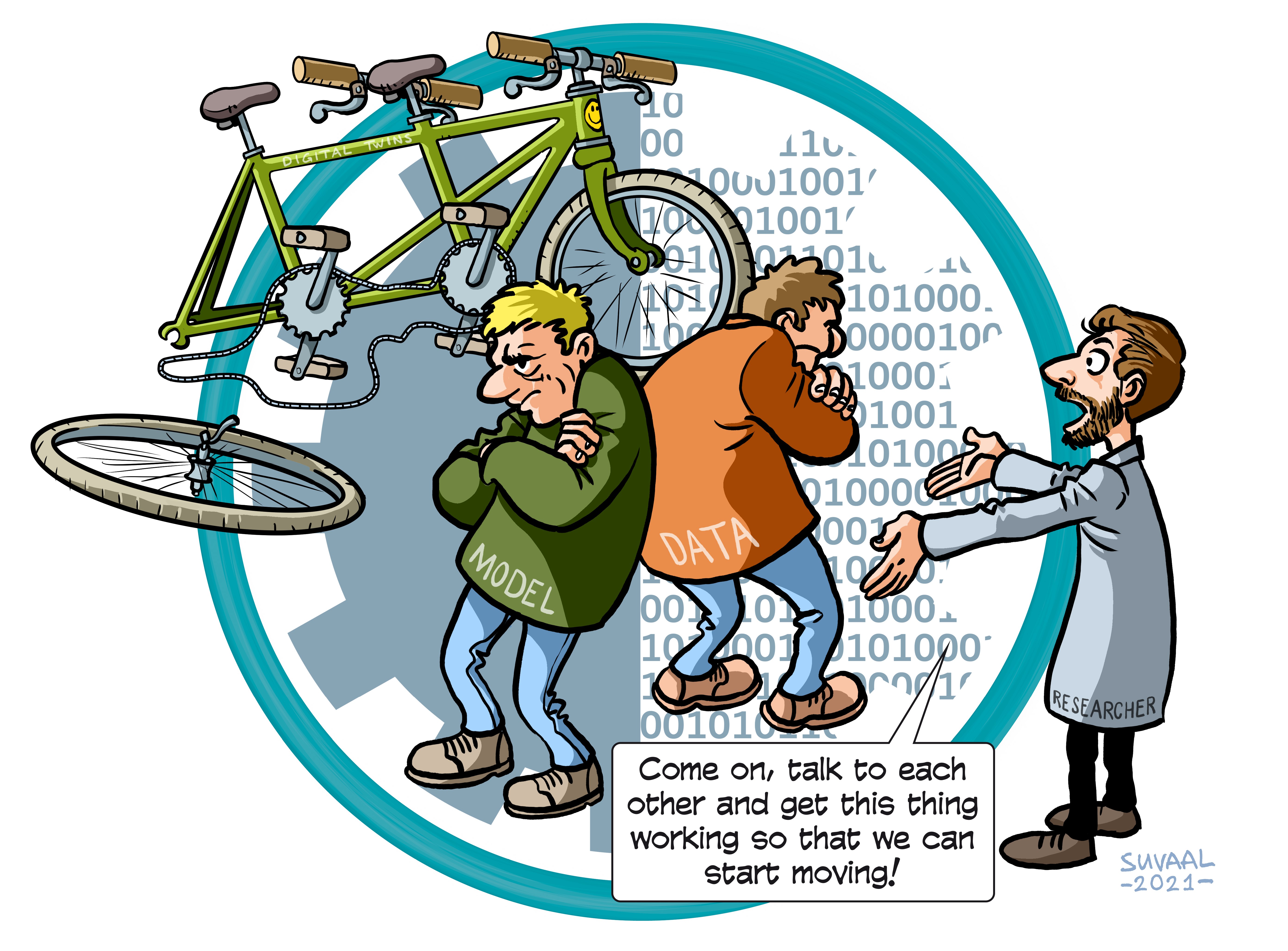Integration of Data-drIven and model-based enGIneering in fuTure industriAL Technology With value chaIn optimization
Research Themes: Energy, Robotics, High tech, Aerospace, Software technology & Intelligent Systems


A TRL is a measure to indicate the matureness of a developing technology. When an innovative idea is discovered it is often not directly suitable for application. Usually such novel idea is subjected to further experimentation, testing and prototyping before it can be implemented. The image below shows how to read TRL’s to categorise the innovative ideas.
Summary of the project
High-tech systems are increasingly complex and difficult to design, produce and maintain. There is a lack of synergy between model-based engineering and data-driven approaches, which hamper the development of reliable and agile digital twins. Besides, data analytics is hardly used in real-time decision-making due to the lack of guarantees on performance and safety. A digital twin is the description of a process or system that is enhanced with (live) data simulating the real world as accurately as possible. Researchers aim to develop methods to make accurate digital twins of such high tech systems; with the development of a unified mathematical (mathware) and ICT (software) platform for integrating model-based engineering methods and data-driven approaches to significantly improve the current value chain. This asks for a more integrated approach in which the identification and control steps are closely intertwined and models are updated via data-driven methods. The challenge for this research is to establish a more engineering discipline instead of developing one-off solutions.
What's next?
For applied mathematics and computational sciences to develop the mathematical underpinnings and scalable algorithms that will take such a digital twin to the next level. This means moving from doing the fundamental science on how to build and set up a digital twin to becoming an engineering tool that can be used for designing and controlling high tech applications. The researchers aim to develop a platform that covers all key enabling technologies for the automated development of digital twins and their use for technology health management, as well as for control systems reconfiguration and optimization, and demonstrating this in a real-life setting.
Contribution to the Energy transition?
Digital twins can play an important role in various applications related to our renewable based energy system. It can act as an accurate, timely and reliable support tool for decision making of stakeholders at all engaged levels. Applications you can think of are: control room advice, education & training, reflective analysis, autonomous short- and long-term decision-making & support, asset management, field operation support, automatic controller reconfiguration, collaborative decision making, and predictive maintenance.
Prof. dr. ir. Tamas Keviczky
Tata Steel
Philips
Demcon
Stamicarbon
Eindhoven University of Technology
Airborne International
ASML
VDL
Altran
University of Groningen
ASM Pacific Technology
Canon
TNO
Qing
Leiden University
Faculties involved
- 3ME
